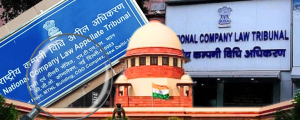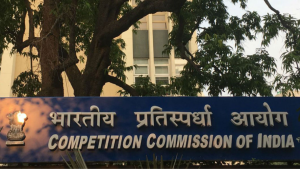

Towards a Report on the State of the Judiciary in India – Part I
In the initial stages of our work, we decided to work towards a comprehensive report on the state of the judiciary in India. For this we invited a range of lawyers, academics and experts in public policy for a consultation. This consultation took place in the DAKSH office on 11 July, 2015, between 10:00 a.m. and 3:30 p.m. This is the first of a two part blog post, containing a detailed summary of discussions of the consultation.
The following were the participants:
- Alok Prasanna – Senior Research Fellow, Vidhi Centre for Legal Policy, New Delhi
- Arun Sri Kumar – Partner, Keystone Partners, Bangalore
- Ashwin Mahesh – Co-founder, Centre for Public Problem Solving, Bangalore
- Bobby Kunhu – Human Rights Lawyer, Salem
- Deepika Murali – Advocate, DM Law Chamber, Chennai
- Naren Thappeta – Founder, Law Firm of Naren Thappeta, Bangalore
- Ramapriya Gopalakrishnan – Advocate at Madras High Court, Chennai
- R. Sri Kumar – Chairman, Indian Centre for Social Transformation, Bangalore
- V. Vijaykumar – Professor of Law, National Law School of India University, Bangalore
The DAKSH team members present were Harish Narasappa, Kishore Mandyam, Kavya Murthy, Ramya Tirumalai, Shruti Vidyasagar, and Chandan Gowda.
Harish Narasappa started the session with a brief introduction of the Rule of Law Project and the idea of the State of the Judiciary Report. Kishore Mandyam made a presentation explaining the data that DAKSH has collected. [1]
Prior to the consultation the participants were given a blueprint of the State of the Judiciary Report as envisaged by DAKSH. The report was divided into three sections: the first dealing with judicial administration and working, the second focusing on DAKSH’s data and how it would help us better understand the judiciary, and the third concentrating on access to justice in India. We asked the participants a set of questions that were grouped to correspond to these three chapters. In this post you will find a recap of the discussions revolving around the first set of questions.
Discussion:
1. Judicial Administration
a) Who manages the judicial system?
b) What measures of accountability exist in judicial administration?
c) How can existing systems be improved?
d) What data points can we obtain for studying this?
The attendees made suggestions on how to improve accountability measures and what data points we could consider in this regard.
On judicial administration, the first point the discussion touched upon was the constant leadership and portfolio changes that each High Court and High Court judge respectively were subjected to. Several participants felt these regular changes are a chief contributor to inefficiency. Alok Prasanna suggested that we review the average tenure of the chief justice of each High Court: this would allow us to examine whether continuous change in leadership of the court could be responsible for weak administrative systems, which are altered frequently as different systems are set in place by each chief justice.[2] He mentioned that there are committees of judges formed in each High Court to deal with data management, which release reports of their working. He recommended that we study these as a secondary source of data to understand the administrative workings of each High Court.
Ramapriya Gopalakrishnan concurred with Alok Prasanna on his point about constant movement and reshuffling in the High Courts. She mentioned that analysing portfolio allocation of High Court judges as per the weekly causelist would be useful, since it affects judicial output and efficiency, especially if there is constant change in portfolios or a judge is allocated a portfolio he/she is not familiar with. She said the duration of portfolios, number of subjects each judge deals with, and number of judges dealing with multiple portfolios at once were data points worth examining in detail.
A second key point that emerged from the conversation on judicial administration was the need to acknowledge the distinction between judicial powers and administrative powers of the judiciary. Arun Sri Kumar said that administrative processes need to be removed from judicial control, and it should be made clear that doing this does not impinge on judicial independence. On data points we could use, he suggested that we review the work of lower court judges and the number of ‘mind hours’ [3] judges in each court spend on administrative tasks. The data collected could be used to suggest the creation of a purely administrative role, which would in turn significantly increase capacity and efficiency. Alok Prasanna mentioned the courts and tribunal services in the United Kingdom as a good example of separation of administrative and judicial functions, to which we could refer while suggesting reform.
Naren Thappeta opined that the judiciary should be viewed as a service organisation, as this would increase its transparency, accountability, and accessibility to the ordinary citizen. [4] He said that the judiciary should be asked to, and should, put out all the information that any other service organisation would. Prof. V. Vijaykumar however disagreed with Naren Thappeta on this point, as he felt that that the judiciary would refuse to view itself as a service organisation.
Ashwin Mahesh suggested that we need to examine the role of lawyers in the management of the judicial system. He felt that merely looking towards the judiciary was insufficient, as a large part of delay could be attributed to lawyers’ behaviour (for example, seeking several unnecessary adjournments). He also stressed on the advocacy element, and felt that making a prioritised list of administrative issues that need to be sorted out would be a good start.
Bobby Kunhu proposed that we examine the budget and demand for grants by each High Court. Also, in relation with the theme of accountability and transparency, he felt that the post-retirement appointments of Supreme Court judges were worth looking into.
Ramapriya Gopalakrishnan raised the issue of filling vacancies in the lower courts. The statistics on vacancies are available in Supreme Court news bulletins and would illustrate if the system is severely understaffed and thus inefficient. Arun Sri Kumar offered an interesting perspective on representation of vacancies: suggesting that we represent vacancies as lost judicial days and hours. The judicial hours worked could be calculated on the basis of the number of benches sitting.
Ramapriya Gopalakrishnan also opined that monthly reports submitted by lower courts to the High Courts, which contain details of disposal rates, would be a good resource to collect, so that DAKSH data could be verified.
The role of citizens and litigants in the judicial system was also discussed. The group said that the better informed citizens are of judicial process, the more effectively they would use the system. The participants came up with some ideas for tools and studies that could be put together to improve citizen understanding. Ashwin Mahesh recommended that DAKSH create a map of the courts and tribunals based on their jurisdiction. This would be a tool that citizens could use to identify the most suitable forum for their disputes, thus avoiding filing cases in courts or tribunals without requisite jurisdiction. Prof. V. Vijaykumar highlighted the need to create a set of criteria for admission of cases and point out to the judiciary the need to impose adequate costs for failure to conform. Application of both in tandem would result in immediate disposal of frivolous cases. A study of orders would strengthen this point: the number of cases dismissed on these grounds would illustrate to the judiciary the need to tighten the rope on frivolous cases. R. Sri Kumar suggested that we make a list/table of the absolute minimum data that each High Court needs to make available.
Prof. V. Vijaykumar suggested that we speak to state judicial academies about presenting our database and findings to judges, since they were unlikely to have seen this kind of information, and it would give them insights on how to change their processes.
This brings us to the end of the conversation revolving around the first set of questions.We will be back with the second part of the summary of discussions next week.
[1] Additional details are available on our website.
[2] This point was reiterated by Arun Sri Kumar.
[3] ‘Mind hours’ for a court can be computed by calculating the number of judges in a particular court and multiplying it by the average number of hours that they sit per day and the number of days the judges sit in court in a year.
[4] This point was reiterated by Ashwin Mahesh.
The views expressed in this article are solely those of the author’s and they do not represent the views of DAKSH.

Ramya Tirumalai
RECENT ARTICLES


Testing the Waters: Pre-Implementation Evaluation of the 2024 CCI Combination Regulations

Not Quite Rocket Science

Administration of justice needs an Aspirational Gatishakti

-
Rule of Law ProjectRule of Law Project
-
Access to Justice SurveyAccess to Justice Survey
-
BlogBlog
-
Contact UsContact Us
-
Statistics and ReportsStatistics and Reports
© 2021 DAKSH India. All rights reserved
Powered by Oy Media Solutions
Designed by GGWP Design